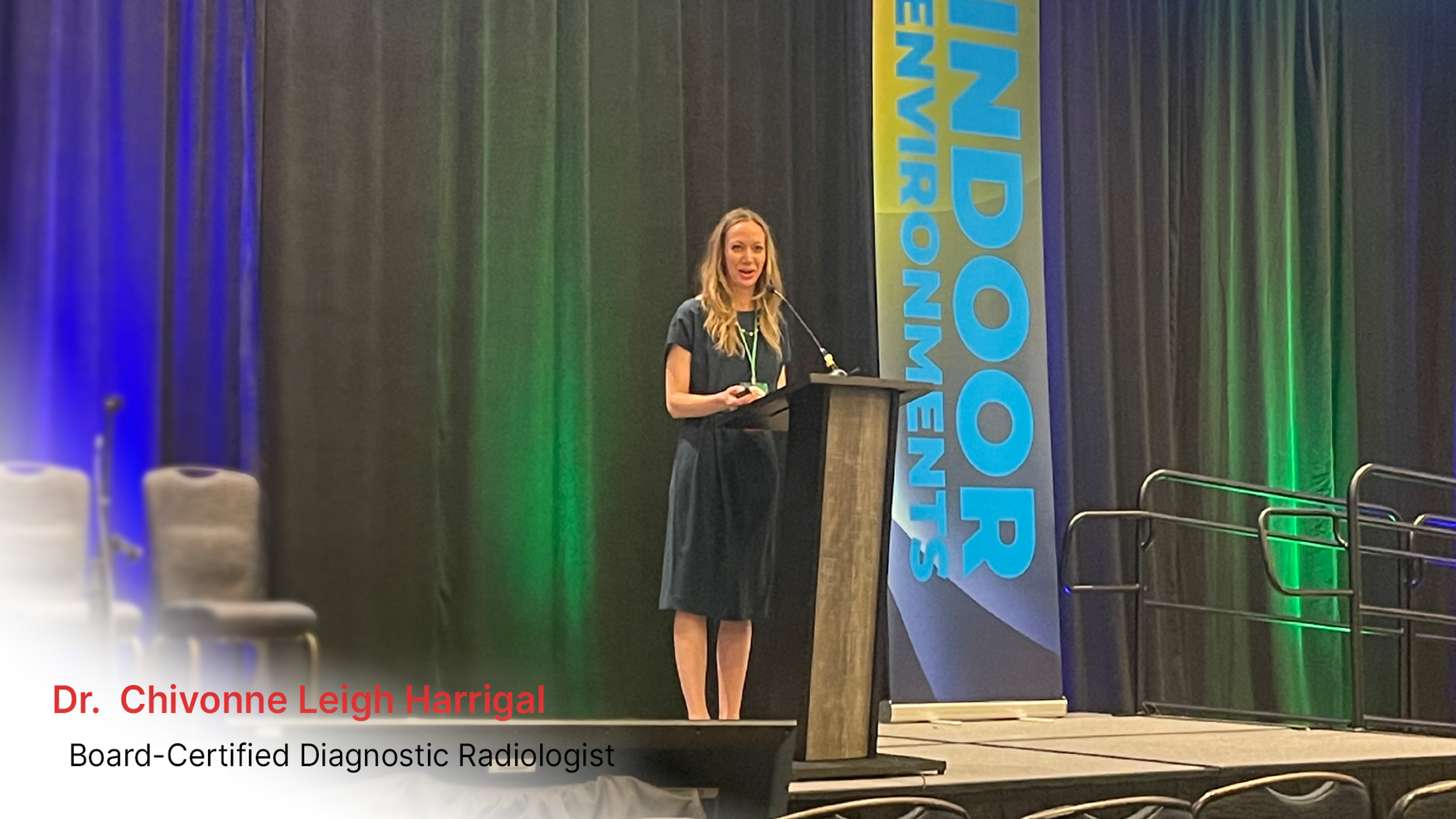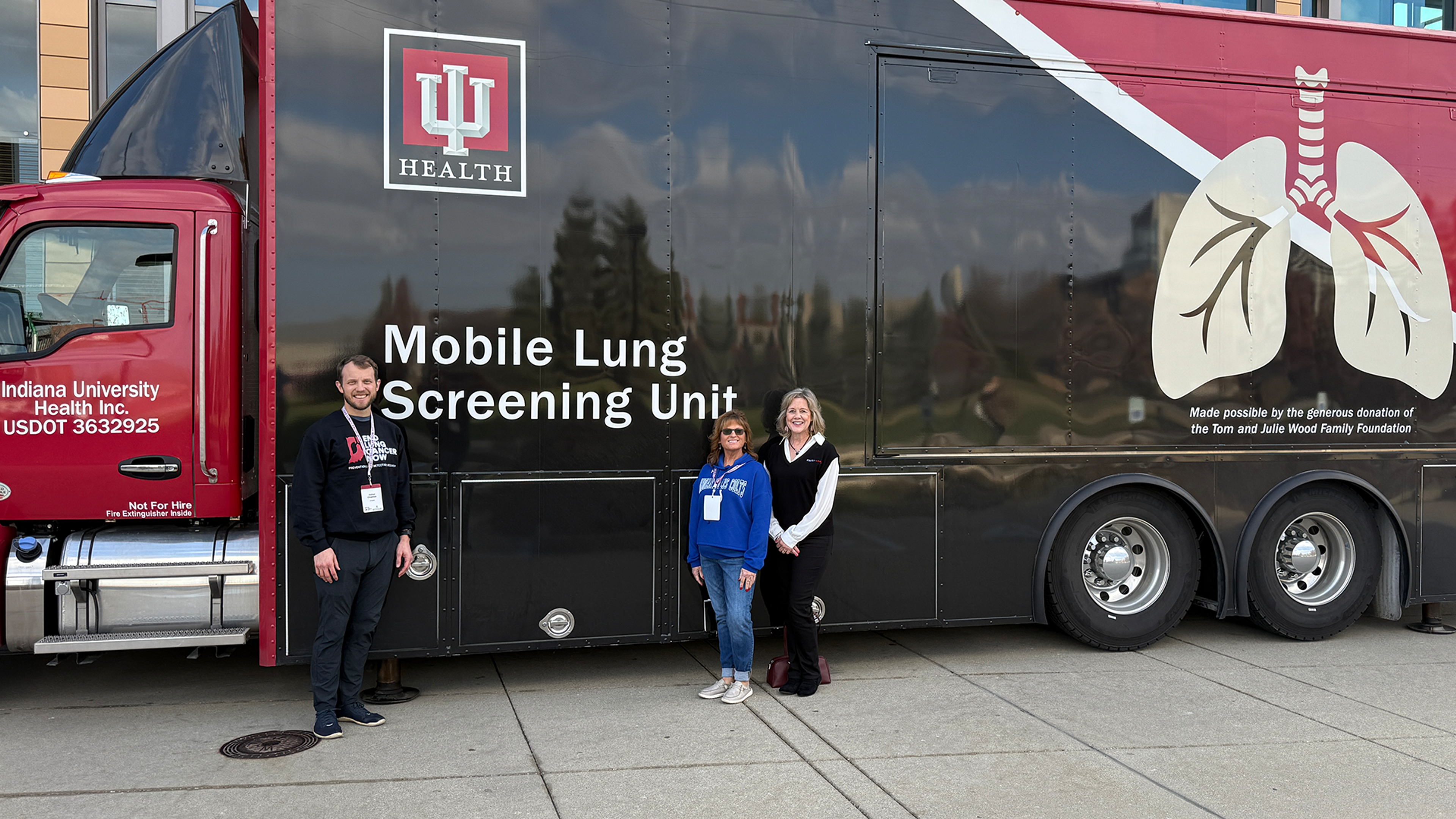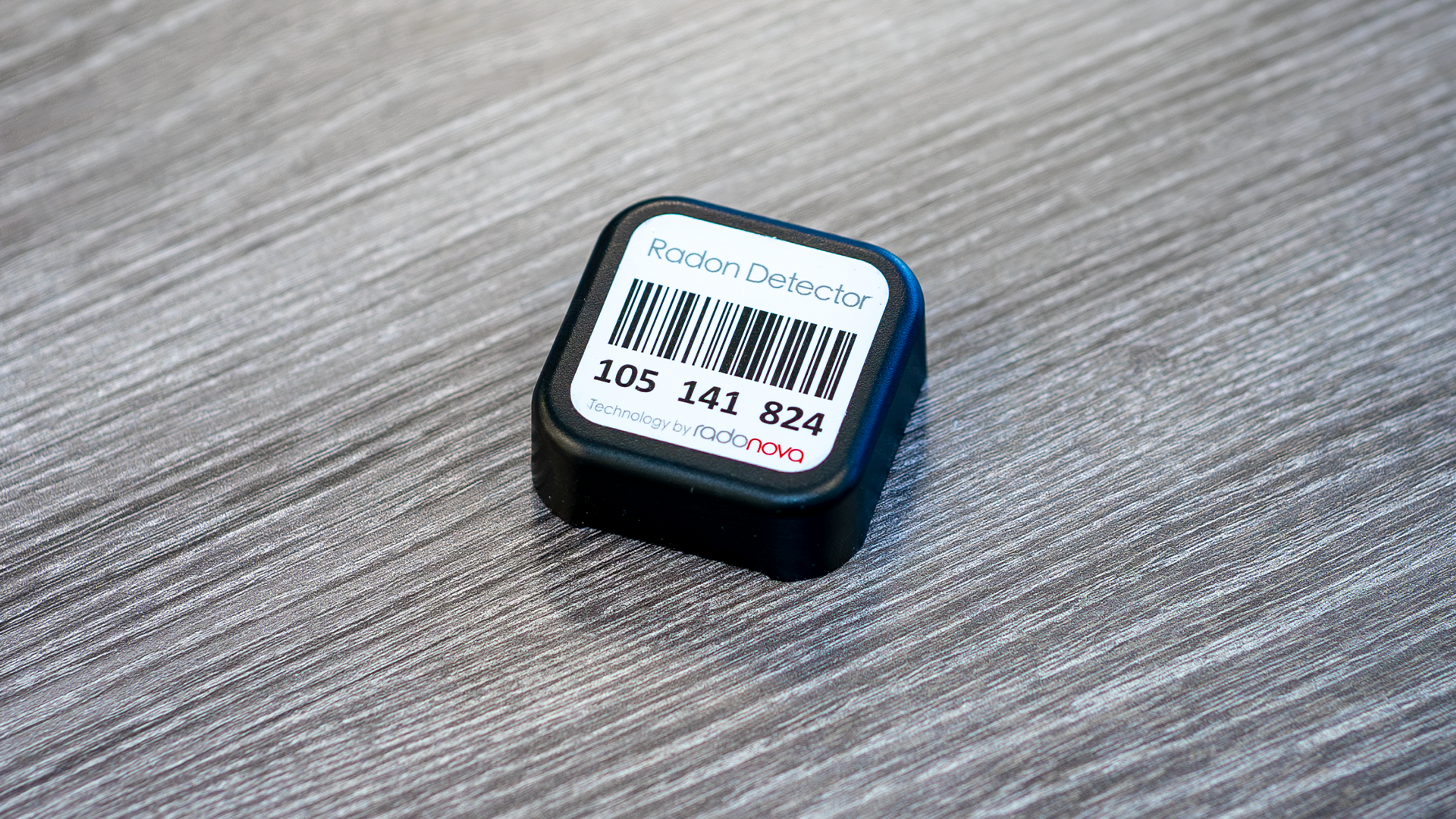

A Gentle Nudge That Can Save Your Life
Dr. Chivonne Harrigal is a board-certified radiologist who specializes in cancer imaging. She graduated from the University of Pittsburgh School of Medicine in 2005, followed by a radiology residency and fellowship at Stanford University School of Medicine where she served as a chief resident. However, it wasn’t until 4 years ago when she attended a Nevada Cancer Coalition meeting that she learned that radon is a risk factor for lung cancer. This prompted her to test her own home for radon and have it mitigated. Then, when she learned that her state of Nevada had the lowest lung cancer screening rate in the United States, it motivated her to take action beyond her own home.
Approximately 4.5% of eligible high-risk people in the U.S. get screened for lung cancer. Nevada’s rate was only 1.4%, one of the lowest in the country. This troubled Dr. Harrigal and caused her to dig deeper as to why. “What we found is that Nevada is very spread-out geographically and all of the lung screening centers in our state were in just two cities, Reno and Las Vegas. Many people who live hours away from these cities weren’t able or willing to travel this far to get a 5-minute screening test.” In the last three years Nevada has worked to add more lung screening centers, which includes using existing CT machines to perform this exam, especially in rural communities to improve access.
Radonova attended presentations by Dr. Harrigal this year at the EPA Tri-Regional Radon Stakeholders meeting in Reno, Nevada and the Indoor Environments Association International Symposium in Orlando, Florida. Her compelling speeches led us to interview her for this article.
Dr. Harrigal divides saving lives from lung cancer into four categories:
Prevention
Most people know that smoking is the number one cause of lung cancer, but many don’t know that radon is the number two cause of lung cancer. Additionally, radon is the number one cause of lung cancer in nonsmokers. Testing your home for radon and having it mitigated if levels are high can prevent radon-induced lung cancer.
According to the Indoor Environments Association Radon Report Card in 2024, 23% of the homes in Nevada have radon levels at or above the actionable limit of 4.0 pCi/L. Long-term exposure to radon is what causes lung cancer. Therefore, testing school buildings, workplaces, and other facilities where people spend many hours per day, every day, will also provide prevention.
Early detection
Lung cancer is the leading cause of cancer death in both men and women in America. Lung cancer is fatal for 4 out of 5 people diagnosed. The reason it causes so many deaths is that lung cancer is frequently diagnosed in later stages where the survival rates are the lowest.
The earlier lung cancer is found, the easier it is to treat, and the chances of cure and survival are much higher. Early detection can be achieved through screening with a low dose CT scan (LDCT). Dr. Harrigal shares that only 16% of lung cancer cases are diagnosed in stage 1 without screening. The cases diagnosed in stage 1 improves to 55-85% with screening.
Currently, lung cancer screening is free and covered by Medicare and other insurance companies for eligible people who are 50-80 years old, with a smoking history of 20 pack years or more, who either currently smoke or have quit smoking within the last 15 years. Dr. Harrigal explains that there currently isn’t enough data for the healthcare system/insurance companies to cover lung cancer screening for nonsmokers with other risk factors like radon exposure, secondhand smoke or occupational smoke exposure. Those people wouldn’t be eligible for a free screening test, but they could talk to their health care provider to see if they could benefit from the test and pay out of pocket for it, which can cost between $150 and $400.
Treatment
There can be drawbacks of lung cancer screening such as cost, time, false positives, anxiety about results, radiation exposure, etc. However, once an LDCT comes back with an abnormality and lung cancer is diagnosed, further testing can be done to help get a patient get better, personalized treatment. This can include a biomarker that can help a patient receive targeted therapy. Other testing can identify if a patient could benefit from immunotherapy. The good news is that treatments for lung cancer are better than ever, and they will continue to improve.
Health equity
Reducing socioeconomic health disparities “can be the most challenging piece of this puzzle,” says Dr. Harrigal.There is a need for affordable and discounted testing. But a significant issue with health equity is having “trusted messengers” of information. Communicating the risk of radon as a silent killer can be better received from neighbors, local community health coaches and navigators versus a medical authority.
“Telling the radon story is no different than other grassroots efforts,” says Dr. Harrigal. “People are more open to receiving information from sources they have chosen to trust – such as Facebook groups, neighborhood message boards, schools, and church groups, etc. To save lives from lung cancer, we must be more creative and effective on how we can reach more people to let them know about radon and lung cancer screening tests. If I didn’t know about radon, a lot of folks probably don’t know about it either. Spreading the word and raising awareness is a big step forward in saving lives from radon and lung cancer.”
Gentle nudge
Normalizing lung cancer and removing its stigma can lead to early detection and better outcomes as well.
“Here’s one of the biggest challenges we face in healthcare. We have some great screening tests that can catch cancers earlier and save lives, like mammograms for breast cancer, colonoscopy for colon cancer, pap smears for cervical cancer and low dose CT scans for lung cancer. But there are a lot of reasons that people don’t get these important life-saving exams. We need to ‘gently nudge’ and remind people that early detection saves lives and to schedule that cancer screening test that they might have been putting off.”
Early detection is critical. Giving people a “gentle nudge” to get screened for lung cancer with a LDCT is the first step, especially if they have lung cancer risk factors. “We need to shift the lung cancer diagnosis timing from stage 4 to stage 1 so we can save more lives.”
Click here to stay informed about radon industry news and product discounts.




